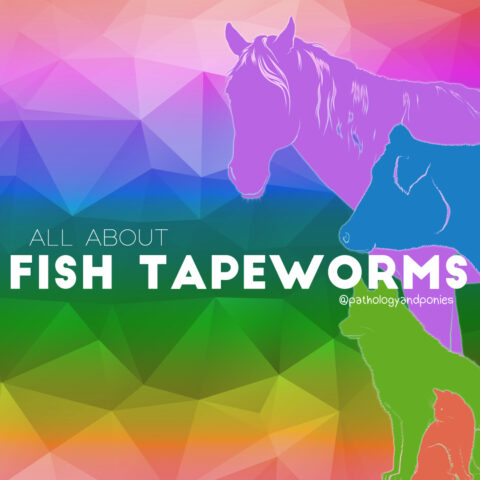
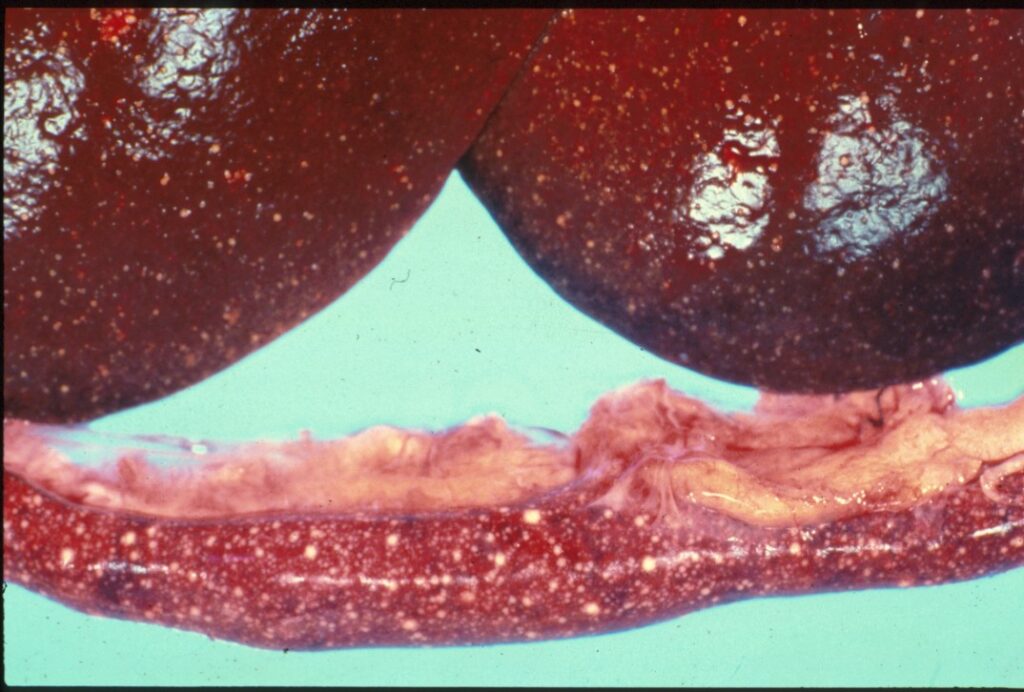
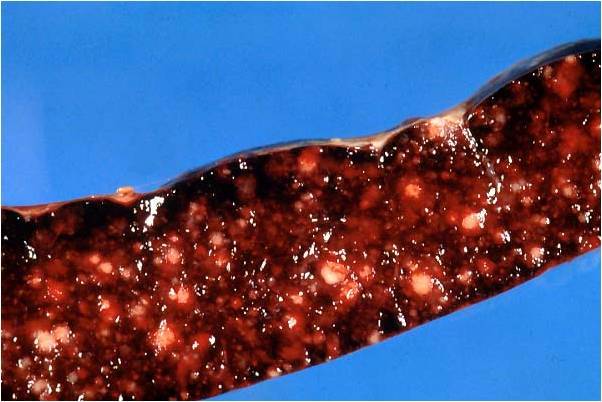
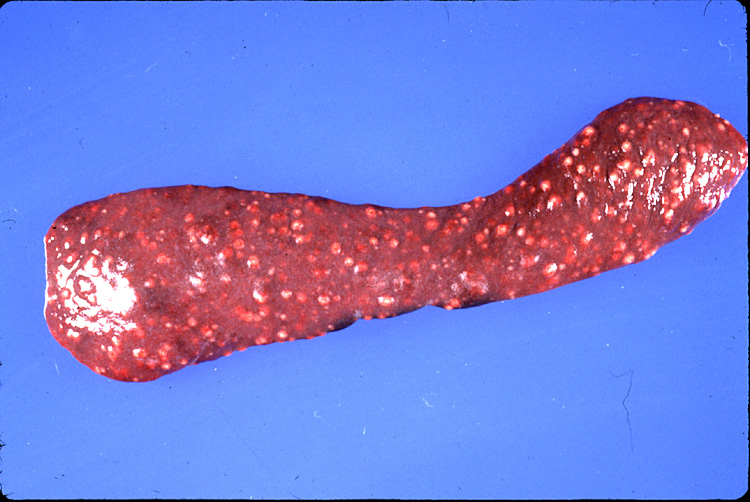
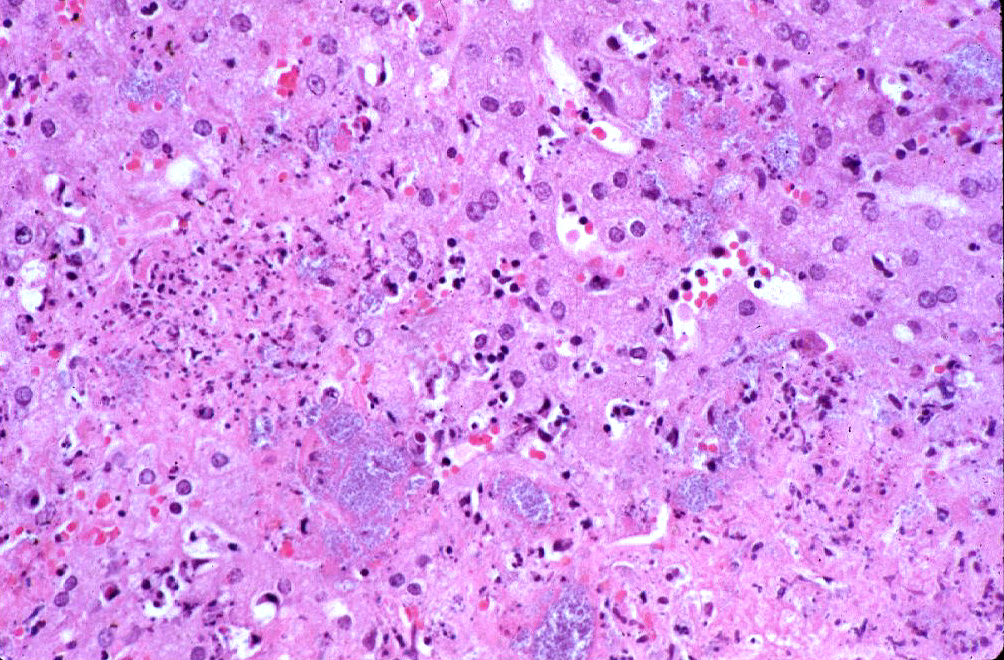
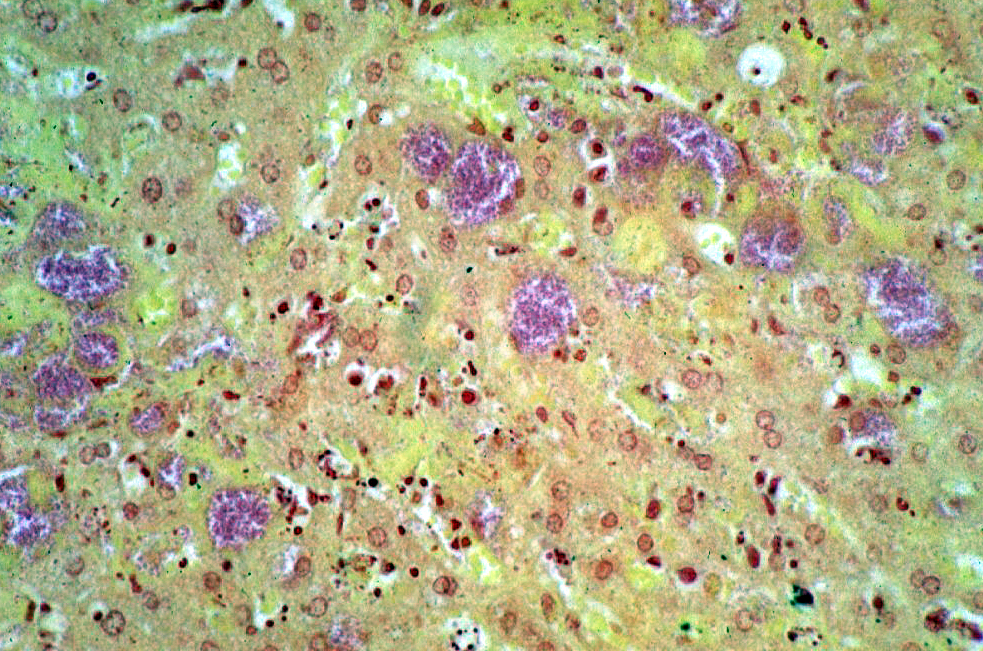
Today’s path rounds are on 𝐭𝐮𝐥𝐚𝐫𝐞𝐦𝐢𝐚!
𝐖𝐡𝐚𝐭 𝐢𝐬 𝐢𝐭?
𝐓𝐮𝐥𝐚𝐫𝐞𝐦𝐢𝐚 is a bacterial disease caused by 𝐅𝐫𝐚𝐧𝐜𝐢𝐬𝐞𝐥𝐥𝐚 𝐭𝐮𝐥𝐚𝐫𝐞𝐧𝐬𝐢𝐬. It was first described in the county of Tulare in California, hence the name!
𝐖𝐡𝐨 𝐠𝐞𝐭𝐬 𝐢𝐭?
This disease affects numerous species, including humans. We most commonly see this disease in cats, rabbits and wild rodents like beavers and muskrats.
𝐖𝐡𝐚𝐭 𝐜𝐚𝐮𝐬𝐞𝐬 𝐢𝐭?
Francisella tularensis can be spread in many different ways, including 𝐚𝐞𝐫𝐨𝐬𝐨𝐥 (particles in the air), direct contact, ingestion and biting insects and ticks. For herbivores and people, the most common route of infection is being bitten by an infected tick. Carnivores tend to acquire the bacteria from eating carcasses of infected animals.
𝐖𝐡𝐲 𝐢𝐬 𝐭𝐡𝐢𝐬 𝐚 𝐩𝐫𝐨𝐛𝐥𝐞𝐦?
Tularemia causes a 𝐬𝐞𝐩𝐭𝐢𝐜𝐞𝐦𝐢𝐜 𝐝𝐢𝐬𝐞𝐚𝐬𝐞, meaning that the bacteria is present in the bloodstream and showers multiple different organs. When the bacteria lodge in an organ, they cause areas of 𝐧𝐞𝐜𝐫𝐨𝐬𝐢𝐬 (cell death). This large amount of necrosis can lead to organ failure, and in some cases may lead to death of the animal. In particular, tularemia seems to like the liver, spleen, lungs and lymph nodes. The bacteria also stimulates a potent immune response, leading to high fever.
𝐇𝐨𝐰 𝐢𝐬 𝐢𝐭 𝐝𝐢𝐚𝐠𝐧𝐨𝐬𝐞𝐝?
Tularemia can be diagnosed based on 𝐛𝐚𝐜𝐭𝐞𝐫𝐢𝐚𝐥 𝐜𝐮𝐥𝐭𝐮𝐫𝐞, where the organism is grown on a culture plate, or by 𝐏𝐂𝐑, where the DNA of the bacteria is identified directly.
𝐇𝐨𝐰 𝐢𝐬 𝐢𝐭 𝐭𝐫𝐞𝐚𝐭𝐞𝐝? 𝐇𝐨𝐰 𝐢𝐬 𝐢𝐭 𝐩𝐫𝐞𝐯𝐞𝐧𝐭𝐞𝐝?
If caught early, antibiotics can be effective at treating the disease. However, later stages of the disease are very difficult to treat! Preventative anti-tick medications and preventing your carnivorous pets from eating wildlife carcasses are the best methods of keeping animals safe from tularemia. Also, if you are eating a wildlife species yourself, make sure it is adequately cooked!
𝐏𝐡𝐨𝐭𝐨𝐬
1-4) Multiple organs including the liver, spleen, and intestinal tract showing white areas of necrosis scattered throughout!
5-6) What those white areas look like under the microscope. You can see the bacteria pretty easily under our usual H and E stain (the pink one), but a 𝐆𝐫𝐚𝐦 𝐬𝐭𝐚𝐢𝐧 specific for bacteria highlights them even better!
𝐒𝐨𝐮𝐫𝐜𝐞𝐬
Maxie, G. Jubb, Kennedy and Palmer’s Pathology of Domestic Animals, Volume 3. Sixth Edition.
Foley JE. Tularemia in Animals. Merck Veterinary Manual 2020.
Photos 1-5 © Noah’s Arkive contributors Doster, Daoust, Leighton, King, Williams licensed under CC BY-SA 4.0.


